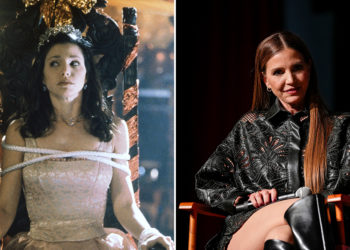President Trump’s rapidly escalating push to exert control over law enforcement in Washington has posed one of the biggest threats to the city’s self-governance since it was granted limited home rule by Congress in 1973.
The fight, which has now moved to the courts, touches not just who gives orders to the city’s police officers, but also the District’s tenuous autonomy.
What is home rule?
The District of Columbia Home Rule Act of 1973 gave residents of the capital a limited form of self-governance for the first time since the 1800s. Before it, Congress and commissioners appointed by the president governed the city. And District residents — who had no representation in Congress — basically had no local elections to vote in, either.
Home rule gave Washington residents the power to elect a mayor, a District of Columbia Council and local neighborhood commissioners. But it also imposed extensive congressional oversight over how those officials govern the city, including the laws and budgets they adopt. As a result, the federal government hovers over how local officials govern just about every aspect of life in the city.
The arrangement — unique to any city in America and originating in the Constitution’s provision for a federal “District” — has shifted some over time. For a period starting in the mid-1990s, a financial control board established by Congress managed the city’s finances. And the federal government has taken back control of some functions the city struggled to fund (given the limitations Congress itself put on revenue the city could raise). But the basic contours of government in Washington have been set for half a century by home rule — or “limited home rule,” as locals more often describe it.
Who controls the police department under home rule?
The Metropolitan Police Department is controlled by Mayor Muriel Bowser of the District of Columbia, a Democrat, who appoints its police chief. The agency primarily functions as other municipal police departments do, although it also regularly supports the federal government. When the president travels around town in his motorcade, M.P.D. manages traffic. When large protests or events like inaugurations happen, M.P.D. officers help secure them (they also responded to the Jan. 6 riot at the Capitol).
The federal government makes payments to the city reimbursing it for such services. But local officials regularly complain that the funds are insufficient, leaving Washington taxpayers to pay for benefits for the federal government.
What changed this week?
On Monday, Mr. Trump announced that he was taking control of M.P.D. — the first time a president has done this. He said the city’s crime had reached crisis levels warranting such action, although for the past two years, crime in the city has declined significantly from a Covid-era spike.
Technically, Mr. Trump was invoking a provision of the Home Rule Act that allows the president to “determine that special conditions of an emergency nature exist which require the use of the Metropolitan Police force for federal purposes.” The law says the president may then direct the mayor to provide those services, although he must immediately notify Congress of why. And Congress must enact a resolution to extend any emergency for longer than 30 days.
Mr. Trump also ordered the Washington National Guard to deploy in the city this week, although officials have said troops will engage in support and beautification projects, not law enforcement. The guard’s arrival in the city reflects another quirk of home rule: In most states, it is the governor who has the power to call up the guard, but in Washington, it is the president and not the mayor who does.
Who controls the Metropolitan Police Department now?
After a week of confusion over this question, a federal judge on Friday prodded the Department of Justice to acknowledge that the answer remains Ms. Smith, the M.P.D. police chief.
On Thursday night, Attorney General Pam Bondi had named Terry Cole, the head of the Drug Enforcement Administration, as the department’s “emergency police commissioner.” She also ordered the department to discard guidance limiting police cooperation with immigration enforcement.
Hours later, Mayor Bowser and the D.C. attorney general, Brian Schwalb, an elected Democrat, filed a lawsuit Friday morning asking a federal court to halt the “brazen usurpation” of the city’s police. Judge Ana C. Reyes of the Federal District Court in Washington held an emergency hearing Friday afternoon during which she instructed the city and the federal government to work out an agreement recognizing Ms. Smith as the police chief.
What happens next?
The agreement, for now, rolls back Ms. Bondi’s attempt to put the federal government more firmly in control of the District’s police. But it leaves open some questions as to whether she can compel Washington police to assist in immigration enforcement. Those questions will probably be further debated in court in the coming week.
The lawsuit itself represents a major escalation of the tension between the District and the president. Mayor Bowser had sought for much of this year to stay in the president’s good graces in an effort to protect the city’s fragile home rule at a time when Republicans hostile to it also control Congress. But that strategy reached its limits this week.
Emily Badger writes about cities and urban policy for The Times from Washington. She’s particularly interested in housing, transportation and inequality — and how they’re all connected.
The post Who’s in Charge of D.C.? Here’s What the Law Says. appeared first on New York Times.




